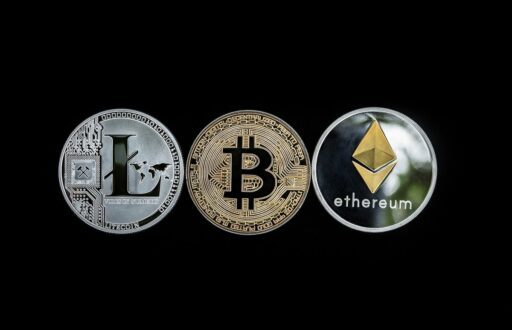In the dynamic world of cryptocurrency, finding an exchange that combines low fees with robust features is crucial for both new and seasoned investors. This article, ‘Navigating the Market: Finding the Best Low Fee Crypto Exchanges,’ aims to guide readers through the maze of options available, focusing on essential criteria for selection, comparative analysis, expert recommendations, and beginner-friendly platforms. With a deep dive into the nuances of trading fees, security, user experience, and more, this piece serves as a comprehensive resource for making informed decisions in the crypto exchange landscape.
Key Takeaways
- Understanding trading fee structures and finding exchanges with the lowest fees can significantly enhance trading profitability, especially for day traders.
- Security is non-negotiable; the best crypto exchanges prioritize robust security measures and clear policies to protect users’ assets.
- User experience is key, with the best platforms offering intuitive interfaces for beginners while still providing advanced tools for expert traders.
- Peer-to-peer (P2P) exchanges can offer cost advantages and no-fee trading opportunities on certain assets, appealing to cost-conscious users.
- Our evaluation methodology is thorough, factoring in security, cost, user experience, and regulatory compliance to recommend the most reliable low-fee crypto exchanges.
Essential Criteria for Selecting a Low Fee Crypto Exchange

Understanding Trading Fees and Structures
When venturing into the world of cryptocurrency trading, one of the most significant factors affecting your potential profitability is the understanding of trading fees and structures. Cryptocurrency exchanges must adapt UX for all users, and part of this adaptation involves transparently conveying their fee schedules. Fees can be a complex subject, with various types of charges that traders need to be aware of.
- Trading fees typically range from 0.1% to 0.5% per trade, with the possibility of lower fees for higher trading volumes or use of specific platform features.
- Deposit fees may be free when transferring from a bank account, but other methods, especially debit cards, can incur fees up to 1.5% or more.
It’s essential to analyze the fee structure of an exchange carefully, as frequent traders will incur more transaction fees, which can quickly accumulate.
Discounts and fee reductions are often available for those who pay fees in the exchange’s native token or maintain a certain balance in their account. Understanding these nuances is crucial for trading profitability, as exchanges play a key role in the digital currency landscape.
Evaluating Security Measures and Policies
When selecting a low fee crypto exchange, security should never be compromised. It’s essential to review the exchange’s security policy, focusing on features such as cold storage for asset protection and multifactor authentication to prevent unauthorized access. A history check for incidents of theft, corruption, or cyberattacks provides insight into the platform’s resilience.
Users can enhance their account security by enabling options like:
- Login password
- Email verification
- 2FA for login
- Google Authenticator
- Mobile verification
- Secondary password for withdrawals
- Anti-phishing code
It’s crucial to choose exchanges that not only offer robust security measures but also demonstrate transparency through regular audits and tax reporting. Look for standards like SOC 1 and 2 in audit reports, which are indicative of a thorough review of the exchange’s systems and finances.
Furthermore, consider the exchange’s insurance policy to understand the level of risk mitigation in place. A responsible organization will manage your funds and data with the utmost care, providing peace of mind in your trading endeavors.
Assessing User Experience for Beginners and Experts
When selecting a low fee crypto exchange, the user experience (UX) is a critical factor that can significantly impact both beginners and experts. A well-designed UX ensures that new users can navigate the platform with ease, while also providing the depth and flexibility that experienced traders require. Continuous feedback and usability testing are crucial to refine the user experience, ensuring that the platform evolves with its users’ needs.
The goal is to create a seamless journey for users, addressing technical issues, enhancing navigation, and boosting conversion rates. A positive UX can transform a first-time visitor into a loyal advocate for the exchange.
To effectively assess the UX of a crypto exchange, consider the following points:
- Ease of use: How intuitive is the platform for someone with no prior experience?
- Functionality: Does the exchange offer advanced tools and features for expert traders?
- Support and resources: Are there educational materials and responsive customer support?
- Performance: How well does the platform perform during high traffic and volatile market conditions?
Our methodology includes practical testing, reviewing online customer feedback, and conducting user surveys to gather insights from real users about the strengths and weaknesses of each platform’s UX.
Comparative Analysis of Top Low Fee Crypto Exchanges

Breaking Down Fee Schedules Across Platforms
When venturing into the world of cryptocurrency trading, understanding the fee structure of each platform is crucial. Different exchanges employ varying fee models, which can significantly impact your return on investment. For instance, some platforms use a flat fee per trade, while others may have a tiered fee structure based on your trading volume.
Here’s a brief comparison of fee structures from a selection of popular exchanges:
| Exchange | Maker Fee | Taker Fee | Deposit Fee | Withdrawal Fee |
|---|---|---|---|---|
| Zengo | – | – | – | Network Fee |
| Uphold | 0.8% | 1.5% | 3.99% | 0% (1.75% for debit card) |
| Bybit | Variable | Variable | – | – |
It’s important to note that fees are just one part of the equation. Consider security, compliance, trading fees, and coin selection when choosing a crypto trading platform. Balance low fees with diverse coin options for optimal returns.
Remember, while low fees are attractive, they should not be the sole factor in your decision-making process. Always weigh the cost against other critical features such as security, user experience, and the range of available cryptocurrencies.
Highlighting No-Fee Trading Opportunities
In the dynamic world of cryptocurrency trading, no-fee trading opportunities are a significant draw for investors looking to maximize their returns. These opportunities can often be found on platforms that offer zero-commission trades or through promotions that waive fees for certain actions or time periods.
- Some exchanges offer a lifetime free pass or promotional periods with zero trading fees.
- Others may provide fee discounts when using the platform’s native token or holding a certain amount of it in your account.
- Additionally, certain platforms may have no fees for specific types of trades, such as maker trades, or for withdrawals.
It’s crucial for traders to stay informed about these no-fee opportunities as they can vary widely between exchanges and over time. Keeping an eye on exchange announcements and updates can help traders take advantage of these cost-saving measures.
While no-fee trades can be enticing, it’s important to consider the overall structure of an exchange’s fee schedule. Some platforms may offset the lack of trading fees with higher withdrawal fees or other charges. Always review the full fee schedule to understand the true cost of trading on a particular platform.
Spotlight on P2P Exchanges and Their Cost Advantages
Peer-to-peer (P2P) crypto exchanges have emerged as a popular choice for traders looking to minimize fees. These platforms facilitate direct transactions between users, bypassing traditional exchange infrastructures and reducing costs. P2P exchanges often offer competitive advantages, such as zero fees on certain assets and a more personalized trading experience.
For instance, Binance P2P stands out as the largest P2P crypto exchange, boasting over 600 assets with fees starting from 0%. Similarly, platforms like LocalBitcoins and Paxful provide fee-free trading environments, although the number of assets available is not specified. It’s important to note that while some exchanges advertise ‘no fees,’ they may still incur costs in other areas, such as withdrawal fees or currency conversion charges.
The allure of P2P exchanges lies not only in their cost-saving potential but also in the increased control they offer to traders.
When considering P2P exchanges, it’s crucial to evaluate the range of assets available and the specific fee structures. Here’s a succinct comparison of notable P2P exchanges:
| Crypto Exchange | Fees | No. of Assets |
|---|---|---|
| Binance P2P | From 0% | 600+ |
| LocalBitcoins | Free | N/A |
| Paxful | Free | N/A |
Remember, while low fees are attractive, they should not be the sole criterion for choosing an exchange. Security, regulatory compliance, and user experience are equally important factors to consider.
Expert Recommendations for Day Traders

Identifying Exchanges with the Lowest Fees for High-Frequency Trading
For day traders, finding an exchange with the lowest possible fees is crucial to maximizing profits. High-frequency trading involves numerous transactions, and even small fees can significantly eat into potential gains. It’s essential to analyze the trading fees closely, as they can vary widely between platforms.
Some exchanges incentivize high-volume traders with more competitive fees. For instance, owning a platform’s native cryptocurrency or surpassing a certain monthly trading volume can unlock lower rates. This can be particularly beneficial for day traders who can meet these thresholds.
When selecting a platform for day trading, consider not only the base trading fees but also any potential discounts for high-volume trading or ownership of native tokens.
Here’s a quick comparison of some popular exchanges known for their low fees for day traders:
| Crypto Exchange | Base Trading Fee | Volume Discount | Native Token Discount |
|---|---|---|---|
| Binance | From 0.1% | Yes | Yes |
| Bitstamp | From 0% | No | No |
| eToro | Flat 1% | No | No |
Lykke stands out as a unique option, offering a no fee crypto trading platform, which can be particularly attractive for those looking to avoid fees altogether.
Analyzing Liquidity and Trading Volume
Liquidity is the cornerstone of a thriving crypto exchange, ensuring that traders can buy and sell assets without significant price slippage. High liquidity indicates a robust market where assets can be quickly converted to cash. This is particularly crucial for day traders who need to execute trades swiftly to capitalize on market movements.
Liquidity is like a safety net for traders, providing the confidence to trade without the fear of moving the market against themselves.
Trading volume, on the other hand, gives a snapshot of the market’s activity level. Exchanges with high trading volumes are often preferred by day traders as they offer more opportunities and potentially tighter spreads. Below is a table showcasing the trading volume of select exchanges:
| Exchange | 24h Trading Volume (USD) |
|---|---|
| Exchange A | $2,000,000,000 |
| Exchange B | $1,500,000,000 |
| Exchange C | $1,000,000,000 |
It’s important to note that while low fees are attractive, they should not come at the expense of liquidity and trading volume. A balanced approach that considers all these factors is essential for successful day trading.
Advanced Tools and Features for Strategic Trading
For day traders, the arsenal of tools at their disposal can make or break their trading success. Advanced charting tools are essential for in-depth technical analysis, allowing traders to visualize market trends and pinpoint potential trade opportunities. Automated trading bots are another critical feature, enabling the execution of high-frequency trading strategies that capitalize on minute price movements.
Portfolio rebalancing tools help maintain a desired asset allocation over time, adjusting the portfolio automatically in response to market changes. Range trading tools assist in identifying stable price ranges within which traders can strategize their entries and exits.
The integration of these advanced tools into a trading platform can significantly elevate a trader’s ability to make data-driven decisions and manage risks effectively.
Beginner-Friendly Crypto Exchanges with Low Fees

Top Picks for Newcomers to the Crypto Market
For those new to the crypto world, selecting the right exchange can be a daunting task. Reddit users often highlight the importance of transparency and low fees when recommending platforms suitable for beginners. Among the top contenders, Coinbase stands out for its ease of use and educational resources, making it a go-to choice for those starting their crypto journey.
- Coinbase: Known for its user-friendly interface and educational content.
- Binance: Offers a comprehensive range of cryptocurrencies and detailed tutorials.
- Kraken: Praised for robust security measures and straightforward fee structure.
When venturing into the cryptocurrency market, it’s essential to choose an exchange that balances security, user-friendliness, and cost-effectiveness. This ensures a smooth and secure introduction to digital asset trading.
It’s crucial to consider platforms that are not only easy to navigate but also provide the necessary support and resources to help beginners understand the market dynamics. Security measures should never be compromised in favor of lower fees, as they are the bedrock of a trustworthy exchange.
Simplifying the Sign-Up and Trading Process
For newcomers to the crypto market, the sign-up and trading process can be daunting. Choosing the right exchange is crucial, as it should offer a balance between user-friendliness and comprehensive features. Beginners should look for platforms that provide a simple account setup and a straightforward user interface. Here are some steps to get started:
- Step 1: Create your account and complete KYC by providing necessary personal details.
- Step 2: Set up a payment method that matches your account credentials.
- Step 3: Familiarize yourself with the trading interface to utilize tools like limit orders for better pricing.
By streamlining these initial steps, exchanges can ensure that even those new to cryptocurrencies can navigate the trading process with ease, potentially leading to savings on trading fees over time.
It’s also important to consider the fee structure of the exchange. Some platforms offer a tiered fee schedule based on trading volume, which can be advantageous for users as they increase their trading activity.
Educational Resources and Demo Accounts
For newcomers to the crypto market, the availability of educational resources and demo accounts is a critical factor in choosing an exchange. Demo accounts allow users to practice trading without financial risk, providing a safe environment to learn platform features and test strategies.
Exchanges that offer comprehensive educational materials, alongside demo accounts, equip users with the knowledge needed to navigate the crypto space effectively. Below is a list of features that beginners should look for in an exchange:
- Comprehensive asset statements for tracking trades and rewards
- User-friendly mobile platforms
- Regulatory compliance and risk management tools
- Availability of a demo or virtual account
It’s essential to start with a solid understanding of the risks involved in crypto trading and to choose an exchange that prioritizes user education and risk management.
When selecting an exchange, beginners should consider platforms that not only offer low fees but also provide the necessary support to foster a guide to successful crypto trading. This includes starting with familiar cryptocurrencies like Bitcoin, using demo accounts to gain experience, and thoroughly understanding the risks before diving into more complex trades.
Methodology Behind Our Crypto Exchange Evaluations

How We Assess Security and Cost
In our evaluation of crypto exchanges, security and cost are paramount. We meticulously analyze each platform’s security features, including regulatory compliance, deposit insurance, and the robustness of their authentication processes. Our assessment also extends to a thorough review of their security policies, historical incidents of theft or cyberattacks, and the effectiveness of their cold storage solutions.
To accurately gauge the cost of trading, we consider a variety of factors:
- Trading fee structures
- Availability of no-fee trading opportunities
- Number and types of payment methods accepted
Our methodology is comprehensive, ensuring that the exchanges we recommend provide a secure and cost-effective trading environment.
We also incorporate user feedback from online reviews and surveys, supplementing our practical tests with real-world user experiences. This holistic approach allows us to present a nuanced view of each platform’s performance in terms of security and cost, which heavily influences their final ranking in our evaluations.
Our Review Process and Scoring System
Our evaluation of crypto exchanges is meticulous and data-driven. We start by collecting comprehensive data from a variety of sources, including online reviews and ratings, expert opinions, and direct testing of the platforms. This multi-angle approach ensures a well-rounded assessment.
We then score each exchange based on key performance indicators (KPIs), which include fee structures, security protocols, user experience, and customer support. Our scoring system is transparent and based on a 5-star scale, with 5 stars representing the best possible score. Here’s a simplified version of our scoring chart:
| Rating | Meaning |
|---|---|
| 5 | Best |
| 4 | Excellent |
| 3 | Good |
| 2 | Fair |
| 1 | Poor |
Our ratings are biased toward offers that deliver versatility while cutting out-of-pocket costs, aiming to maximize the value for our users.
We continuously update our reviews to reflect the latest market trends and user feedback, ensuring that our recommendations remain relevant and trustworthy.
The Importance of Regulatory Compliance in Our Rankings
In our evaluations, regulatory compliance stands as a cornerstone, ensuring that the exchanges not only offer competitive fees but also adhere to the legal standards set by governing bodies. This compliance is indicative of an exchange’s commitment to operating within the frameworks designed to protect investors.
- Adherence to Anti-Money Laundering (AML) laws
- Implementation of Know Your Customer (KYC) procedures
- Compliance with international sanctions and regulations
By prioritizing regulatory compliance, we aim to provide a list of exchanges that are not only cost-effective but also secure and trustworthy for users.
The landscape of cryptocurrency regulation is complex and ever-changing. Our ranking methodology incorporates a thorough review of each exchange’s compliance history and the robustness of their legal and regulatory frameworks. This ensures that our recommendations stand the test of time in a market where trust is paramount.
Conclusion
In the dynamic world of cryptocurrency trading, finding an exchange that aligns with your needs while minimizing fees is crucial. Throughout this article, we’ve explored a variety of platforms, from those best suited for beginners to the most cost-effective options for seasoned traders. We’ve dissected the importance of low fees, security policies, and user-friendliness, and provided insights from experts on what to prioritize when selecting a crypto exchange. Remember, while low fees are attractive, they should not compromise the security and reliability of the service. As the crypto landscape continues to evolve, staying informed and vigilant will help you navigate the market effectively. Whether you’re a day trader looking for liquidity or a newcomer seeking simplicity, there’s a low fee crypto exchange out there that’s right for you.
Frequently Asked Questions
What is a crypto exchange?
A crypto exchange is a platform where individuals can buy, sell, or trade cryptocurrencies for other digital currencies or traditional currencies like US dollars or Euro. Exchanges provide a marketplace for the liquidity of cryptocurrencies and often offer additional services such as wallet storage and market analytics.
What should I look for in a crypto exchange?
When looking for a crypto exchange, consider factors like security measures, fee structures, the variety of available cryptocurrencies, user experience, customer support, trading volume, and whether the exchange is regulated and compliant with financial laws.
Which crypto exchange has the lowest fees?
eToro is known for having low fees, charging a flat 1% fee added to the market price of each digital asset. However, fees can vary, so it’s important to compare different exchanges to find the one that offers the best rates for your trading needs.
What is the best no-fee crypto exchange?
While completely no-fee crypto exchanges are rare, some platforms offer free trading on certain assets. Examples include Kucoin, Binance, and Bitstamp, which offer 0% fees on specific cryptocurrencies. Always read the fine print to understand what ‘no-fee’ entails.
What is the best P2P cryptocurrency exchange?
The best P2P (peer-to-peer) cryptocurrency exchange can vary based on user preferences, but P2P exchanges generally offer cost advantages and a more direct trading experience between individuals. It’s important to use a reputable P2P platform to ensure security and fair trading practices.
How do I choose the best crypto exchange for day trading?
For day trading, look for exchanges with low fees, high liquidity, strong security, and a range of trading tools. The platform should be user-friendly and offer a variety of cryptocurrencies. Advanced features like mobile access and customer support can also be beneficial for implementing complex trading strategies.






Your writing style is so engaging and easy to follow I find myself reading through each post without even realizing I’ve reached the end
Looking for a Halal investment? Get daily profits and repayments with up to 25% returns at https://investurns.com/.